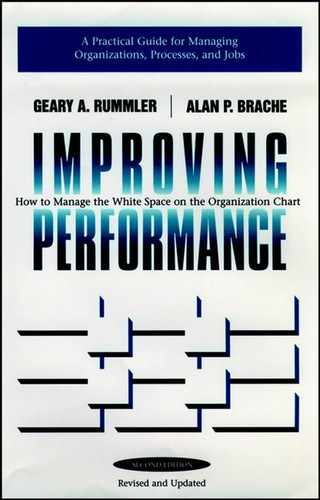11.1. Sin 1: Process Improvement is not tied to the strategic issues the business faces.
One company in the food business is proud of its seventy cross-functional
Note: This chapter appeared as "The Seven Deadly Sins of Process Improvement" in the June 1994 issue of Chief Executive, coauthored by Alan P. Brache and Frank Popoff, chairman and CEO of Dow Chemical. It is reprinted here with the permission of Chief Executive. © 1994 by Chief Executive Publishing, 733 Third Avenue, 21st Floor, New York, NY 10017. All rights reserved. Chapter cross-references have be en added to enable the reader to relate its content to other sections of this book.
Process Improvement Teams. When asked about results, executives mumble vague homilies about "culture change" and "empowerment." Noble pursuits, no doubt, but what's the increase in shareholder value?
Almost everyone of an engineering conglomerate's dozens of business units has documented its processes. When asked how they've used these "maps," they admit that they haven't.
Too many Process Improvement Teams either are not centered around critical issues or are convened to address self-selected "backyard" (often intrafunctional) issues that are not high on an organization's overall priority list. We learned during the "quality circle" era that the location of the microwave oven and the color of the walls have little impact on business results.
Process Improvement Projects should be driven by an issue critical to the organization, such as profitability, market share, regulatory compliance, safety, or customer satisfaction. They also should be tied to measurable goals (such as moving from 35 percent to 38 percent share, reducing warranty claims to less than 3 percent of sales, cutting $40 million from the cost of purchased goods, and decreasing product development/introduction time to six months). As these examples illustrate, most Critical Business Issues require us to address cross-functional processes.
In our experience, Process Improvement efforts that are not driven by a measurable strategic issue lose the support of top management and of the worker-level teams. "Become a world-class competitor," "improve efficiency," and "change our culture" are commendable visions that provide no focus for improvement. The number of teams and the number of flowcharts should not be the measures of success.
Our greatest return on investments in Process Improvement comes from its use as a tool for implementing strategy. The CEO must ensure that there's a focused, intelligent strategy to be implemented. Likewise, he or she must ensure that the Process Improvement plan matches the core processes to the Critical Success Factors (see Chapter Ten) and to the issues standing between the organization and achievement of its strategic vision. Like any good plan, it should contain action items, names, and dates.
If you're not prepared to tie your Process Improvement effort to your strategy and the critical issues facing your business, don't expect significant results. (A solid Phase Ø, described in Chapter Ten, will help avoid this sin.)
